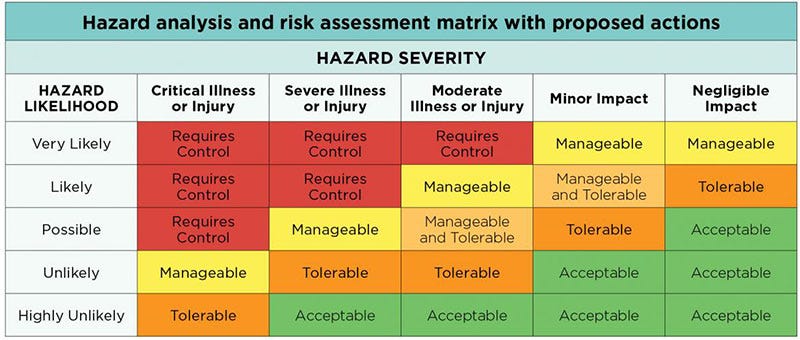Clickbait? Yes. Because now I have your attention, right?
And no. Because there is a through line between nature connection and health. And healthy choices. And fewer unwanted teen pregnancies.
Read me out…

I used to work at the High Mountain Institute - a semester school in the mountains blending boarding school (albeit in rustic cabins…think wood-burning stoves, bunk beds), wilderness expeditions (multi-week trips in Capital-N Nature) with junior year high school academics (I taught Spanish 3-AP Spanish).
One semester, in anticipation of an accreditation audit for the Association of Colorado Independent Schools, we documented our curriculum using “backwards design” following the Understanding by Design framework. Each faculty member came up with the “enduring understandings” (EUs) for their content area. My colleague @JustinTalbot – the Director of Wilderness Programs and Risk Management – came up with one of my favorite EUs of all time:
Don’t do stupid stuff. D2S2.
D2S2 only because educators love abbrieves….
This had a loftier formulation for the audit committee which read something like ‘Life is full of risks. Mindfully balancing the rewards and consequences will maximize the benefits of an experience.’
I loved D2S2. It has about as much pomp as a Tuesday morning even though Justin, its author, spends his days considering worst-case scenarios for wilderness travel gone awry and developing risk management policies, protocols, procedures, and practices to mitigate those terrible eventualities.
Through it all, Justin remains one of the least hyperbolic people I know. He’s the one who first introduced me to the concept of ‘giving fewer f*cks’. Fundamentally, Justin knows we cannot completely avoid risk. So does
(read: No option is completely safe). And, Justin also knows this: risk can be good.The 2-D Grid
Those of us in the outdoor education field (me for over two decades of my career) generally use some form of a risk-consequence analysis grid like the one below to teach instructors and students to develop the judgment backbone to support D2S2. It’s all about lowering the likelihood of shitty things (burns, breaks, wounds) happening and bringing as close to zero as possible the likelihood of really shitty consequences (e.g., dismemberment, death, you know).
The starting place was physical harm. Nowadays, at least in some circles, the grid has evolved to address emotional risk – where we try to lower the likelihood of a participant having an emotional response that will damage their growth. We strive to bring “as close to zero as possible” the likelihood of crippling trauma.
The mantra is still simple, though: don’t do stupid stuff. D2S2.
We Need More Dimensions
Trouble is, even with the nuanced integration of emotional/psychological risk, the grid still guides folks to consider direct and immediate consequences. And, risk continues to show up as a massive barrier to nature-connected programming – even when we know bad consequences are unlikely – and *beneficial risk* is very likely (more on that another day).
A quick anecdote to explain what I mean:
A few years ago, I was facilitating a meeting about developing a community gear library where community members could come to borrow mountain bikes and cook stoves and Nordic skis and base layers and everything in between to support folks going outdoors. “D2S2 Justin” came to support the process.
As I was explaining the premise to get feedback from various community members there to lend their perspective and expertise, Justin raised his hand:
How will you manage the liabilities associated with people borrowing gear that could hurt them?
My jaw dropped. This question from give-fewer-f’s-D2S2-Justin?
Umm…We…well…we…
Another voice filled in where I stammered.
‘Honestly, I’m more worried about the risks of obesity, drug abuse, teen pregnancies, heart disease, and other consequences that come from youth not having positive outlets for their energy.’
The response came from @Kyle MacDonald, founder of Outdoors Empowered Network.
Yes. That. All of that.
Kyle’s answer pinpointed two massive blind spots in the hazard grid: long-term and indirect risks.
Justin nodded.
Nature connection and teen pregnancy
But, does time in nature actually prevent teen pregnancies? Yes. I don’t know. Yes….
I don’t know.
It’s worth asking.
In spite of the complexity and limitations demonstrating causal relationships when it comes to lifestyle choices and conditions, we still must collect the data, draw inferences, and act.
And it’s happening. Researchers (like the folks at Hello Insight) have explored the link between outdoor programs and positive youth development – and others (Casey Family Programs and Children & Nature Network) are documenting how nature connection is a protective factor, supports healing from trauma, and builds greater resilience. The data are (is?) imperfect. And promising.
We must ask questions, add dimensions, and elevate a more nuanced narrative about risk. Because risk is complicated. Physical and emotional. Bad and good. Now and later.
And, after we complicate the risk story, we must put it in perspective and use that new, nuanced story to advocate for nature connections for humans, especially kids.
What do you think?
Do experiences in nature prevent teen pregnancy?
In all seriousness, though,
How can we complicate our risk analysis to include all of the dimensions of risk?
I’d love to learn what you think.
D2S2,
Becca




Hey Chewie -
Not exactly related - but I think there's a clear connection between empowerment of young folks - and the confidence that comes with nature-based-learning and bodily autonomy and self-esteem. Here's an interesting meta-data analysis: https://www.ncbi.nlm.nih.gov/pmc/articles/PMC7084341/ on self esteem and community support and reductions in teen pregnancies.
Your piece was a great article about risk and its management needs for the immediate and long terms outcomes/consequences. Thanks!
We need more dimensions and we need axes that extend into positive consequences!